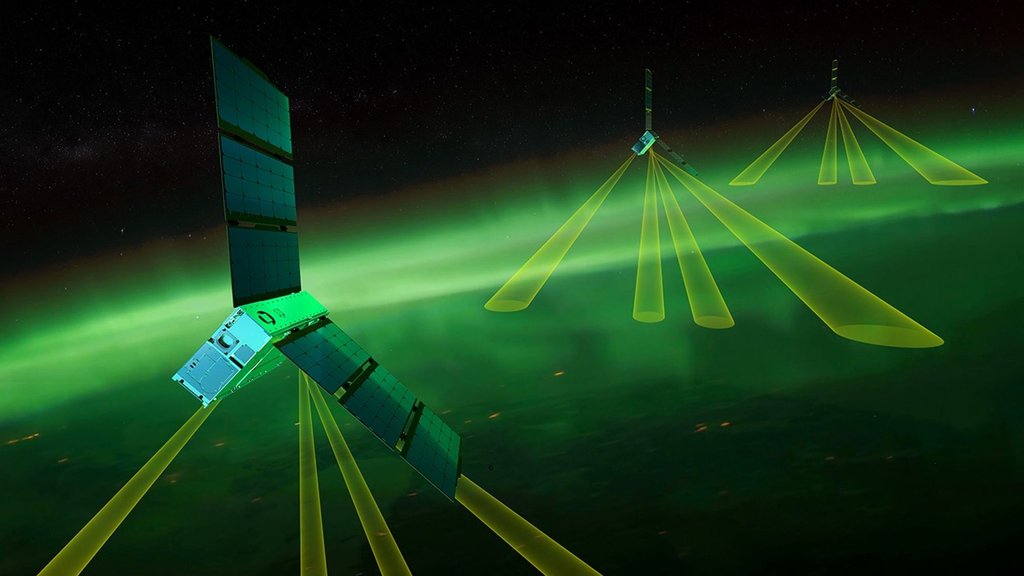
22 Apr 2025
The trio of CubeSats will utilize hardware developed at NASA’s Jet Propulsion Laboratory to study the interaction between the solar wind and Earth’s atmosphere.
Following its mid-March launch from Vandenberg Space Force Base in California, NASA’s EZIE (Electrojet Zeeman Imaging Explorer) mission has taken its first measurements, beginning a campaign to help scientists better understand Earth’s connection to space and mitigate the negative impacts of space weather on society.
These “first light” observations show that EZIE is poised to reveal crucial details about Earth’s auroral electrojets — powerful electric currents that flow through our upper atmosphere where auroras glow in the sky. The mission will map the auroral electrojets up close and in detail for the first time. These intense currents are generated in the northern and southern polar regions of our atmosphere, about 65 miles (105 kilometers) above the ground, when tremendous amounts of energy are transferred into Earth’s upper atmosphere from the solar wind. The same process can also ignite colorful auroras (northern or southern lights).
[Image]
An artist's concept shows the three EZIE satellites orbiting Earth.
